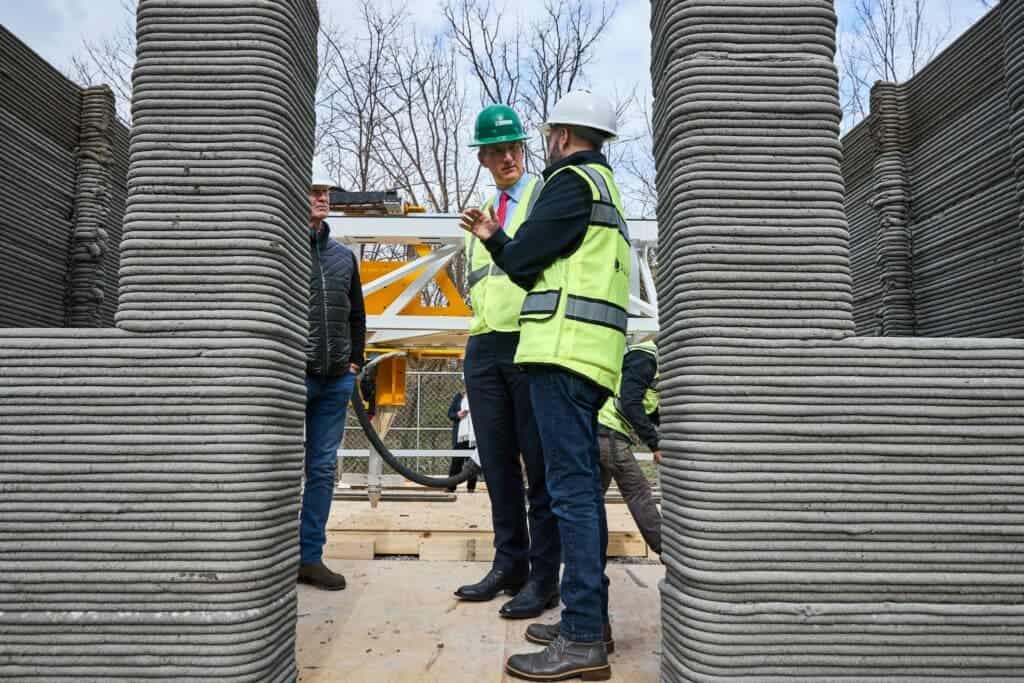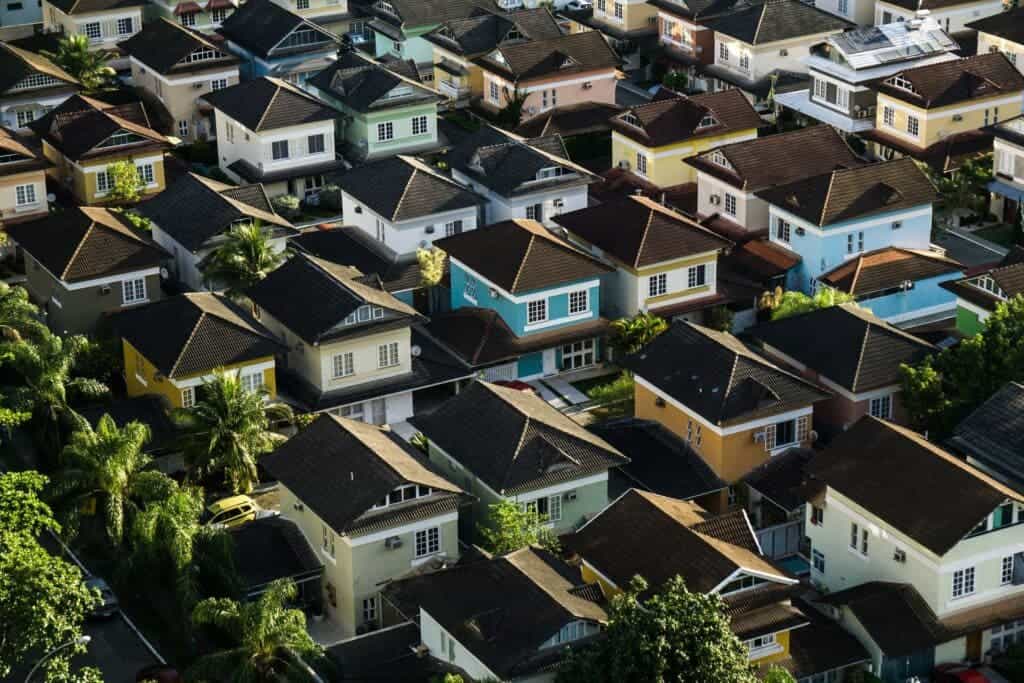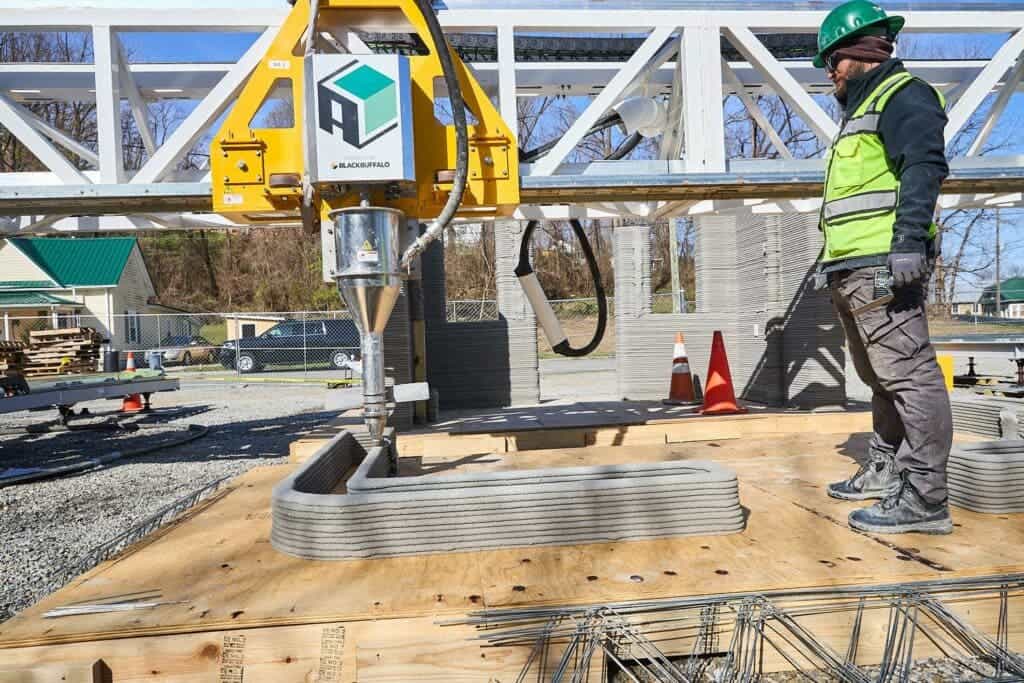An American construction company named Alquist 3D is going to build 200 3D printed houses in Virginia in the next five years. It is the biggest ever construction project that involves the use of 3D printing technology, it will be done by 2027, and it aims not just to be futuristic and resilient — but also cheap.

By the means of its ‘Project Virginia’, the company aims to offer affordable and sustainable homes to people living in remote and underserved regions of the US. The first demonstration of the project was held on April 29 in the town of Pulaski in Virginia. Alquist 3D has selected Pulaski and Raonake towns for their project as the demand for budget-friendly homes has suddenly surged in these areas after COVID-19.
In an interview with TIME, CEO of Alquist 3D, Zachary Mannheimer said:
“With migration patterns shifting due to the pandemic, climate, and economic concerns, smaller communities like Pulaski have a huge need — and an amazing opportunity — to develop affordable housing for new residents. By 3D printing these homes, Alquist and our partners will be accelerating Pulaski and Roanoke’s ability to harness current trends and attract new workers to this wonderful community in southwestern Virginia.”
Why do we need 3D-printed homes?
Affordable homes have become a distant dream for people living in many countries. A recent study from researchers in King’s College London reveals that 48% of the youth in the UK believe that affordable housing is a myth. They think due to their regular expenses they are not in a position to buy their own home.

In the last six months, buying a home has become 50% costlier in the US as well. The 30-year fixed mortgage rates and average home buying price are the highest since 2008. The situation is no different in developing countries like India where housing prices are expected to witness the fastest ever growth in the coming years. This is obviously a shocker for anyone who is currently living on rent but looking forward to buying his own house.
3D printing houses aims to bring down at least some of those costs.
While working on their previous 3D printed home project for nonprofit Habitat for Humanity in Arizona, the construction team at Alquist 3D realized that 3D printing technology results in houses with 15% less per square feet building cost. The number of laborers and the time required to build such houses is also low as compared to contemporary construction methods.
Moreover, 3D-printed buildings use less lumber (lumber prices have sky-rocketed post-COVID-19 due to high demand, however, they are now coming down). All these factors make 3D printed homes an attractive and much more affordable alternative to traditional homes. Highlighting the company’s affordable housing mission, the Alquist 3D website mentions,
“The American Dream is broken. For too long, the economics of home building have driven developers to construct market-rate and above homes instead of ensuring that all Americans have a chance to build their wealth by owning a home. Alquist believes a house is a home before it is an asset. Homes are essential to the fabric of every community. Alquist’s solutions build affordability into home construction for developers and homeowners alike, enabling all to enjoy equal access to the American Dream.”
How does one print homes?
For Project Virginia, Alquist 3D has partnered with Black Buffalo, an industrial 3D printer manufacturer based in New York. The construction company would employ Black Buffalo’s NEXCON printers that are capable of building multiple 3D printed homes together by producing reinforced concrete in the form of layers and fixed patterns. The NEXCON printer weighs about 19 tons (17,236 kg) and can be used to build even three stories structures.

Similar to plastic products 3D printing, the process of printing a concrete home also starts with a computer program being used to first develop a digital model of the house. The 3D printer then prints layers of concrete and these layers are arranged in rows as per the design of the model. The process continues until all the rooms, walls, and other concrete-made sections of the house are built.
The team at Alquist 3D claims that their construction approach is faster than the traditional home building process as they are able to complete a house about two to three weeks earlier than the usual time. The price of a 3D home built under Project Virginia is likely to fall between $175,000 and $350,000 based on its location and the built-up area or size. The company hopes that its 3D-printed homes would fulfill the affordable housing needs of financially distressed communities living in rural areas of Virginia.
However, the 3D home printing technology is still in its budding phase. To implements it on a large scale, companies like Alquist 3D need to overcome various challenges associated with the integration of electrical units and appliances, construction of high-rise structures, and installation of water drainage systems in 3D printed homes. Moreover, such houses also need to be in compliance with the rules and regulations of local town planning authorities, which could be tricky.
3D printed home does sound like a promising technology especially when it comes to the need for affordable housing. It would be really interesting to see how scientists and companies like Alquist 3D deal with the various limitations of this technology and turn 3D home printing into a mainstream construction approach.


